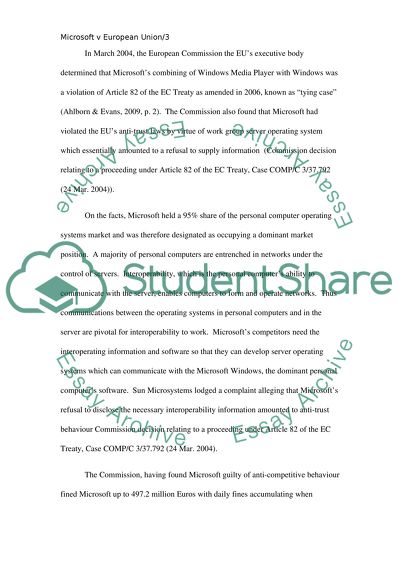Cite this document
(“Microsoft vs. European Union: Anti Competitive Behaviour or Essay”, n.d.)
Retrieved from https://studentshare.org/macro-microeconomics/1437062-microsoft-vs-european-union-anti-competitive
Retrieved from https://studentshare.org/macro-microeconomics/1437062-microsoft-vs-european-union-anti-competitive
(Microsoft Vs. European Union: Anti Competitive Behaviour or Essay)
https://studentshare.org/macro-microeconomics/1437062-microsoft-vs-european-union-anti-competitive.
https://studentshare.org/macro-microeconomics/1437062-microsoft-vs-european-union-anti-competitive.
“Microsoft Vs. European Union: Anti Competitive Behaviour or Essay”, n.d. https://studentshare.org/macro-microeconomics/1437062-microsoft-vs-european-union-anti-competitive.


